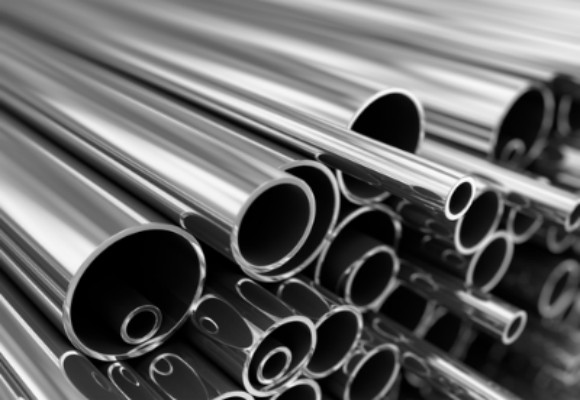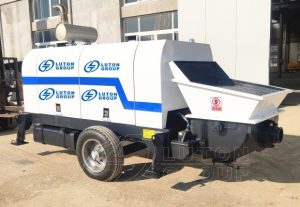Concrete pump cylinder is a crucial part of concrete pumping equipment. It is responsible for accommodating and pushing concrete in the pumping process, as an important place for concrete pumping. Therefore, its performance and quality directly affect the efficiency, fluency and stability of the whole concrete conveying process.


What Is Concrete Pump Cylinder
Concrete pump cylinder is one of the core components of the concrete pumping equipment, used to accommodate and compress concrete materials, in order to realize the transport of concrete. During the pumping process, pistons of concrete pump cylinders move reciprocally ( generally driven by hydraulic cylinders connected with concrete cylinders) to realize continuous delivery of concrete mixture.
What Is The Cylinder Consisted Of
Simply say, concrete pumping cylinder usually consists of cylinder block, piston, seal and other components. The cylinder is a container for concrete. The piston, moving reciprocally, changes the cylinder volume to inhale and push the concrete.
In details, when the piston moves backward, the volume of the cylinder increases, forming negative pressure to introduce concrete into it till the volume of the cylinder reaches to the maximum value. Then the piston begins to move forward, the volume decreases, pressing concrete out of the cylinder block into the delivery pipeline until the piston reaches to the front end of the cylinder, pushing all concrete completely.
The performance of pump cylinder directly affects the working efficiency, conveying distance and conveying quality. Therefore, it is necessary to fully consider about the cylinder material, sealing, wear resistance and other factors during selection and usage of concrete pump cylinder.
How Many Kinds of Concrete Pump Cylinders
HB8, HB15, HB30, HB60, these models belong to the hydraulic piston type concrete pump, including single cylinder and double cylinder. They have different transportation capacity and scope of application, such as HB30 concrete pump belongs to small and medium displacement, medium distance of double cylinder hydraulic piston concrete pump, suitable for a variety of construction sites.
| Items | HBT30-6-52R | HBT40-10-82R | HBT60-13-92R | HBT80-16-170R | HBT90-22-199R |
| Max.concrete output | 30m³/h | 40m³/h | 60m³/h | 80m³/h | 90m³/h |
| Max.concrete pumping pressure | 6MPa | 10MPa | 13MPa | 16MPa | 22MPa |
| Concrete cylinder diameter×stroke | Ф200mm×500mm | Ф180mm×1300mm | Ф200mm×1650mm | Ф200mm×1600mm | Ф200mm×1800mm |
| Outlet Diameter | Ф180 | Ф180 | Ф180 | Ф180 | Ф180 |
In addition, with the continuous progress of technology and the continuous development of the market, new pump cylinder models and specifications continue to emerge. Therefore, in the purchase of the pump cylinder, pay attention to the latest market trends and technical trends, in order to choose a better performance, more in line with the actual needs of the products.
What Is The Cylinder Made Up
There are a variety of material choices, making up with concrete pumping cylinder, to meet different engineering needs and site environment. They are high-temperature alloy steel, stainless steel, wear resistance castings and so on. Each of them has its own unique characteristics and scope of application. When selecting the cylinder, it is necessary to consider comprehensively according to the specific use conditions, performance requirements and cost.
Stainless Steel
Stainless steel with good corrosion resistance, can maintain stable performance in high temperature, humidity and corrosive environment. This material is suitable for the high corrosion resistance.

Alloy Steel
Alloy steel, such as chromium molybdenum steel, alloy steel has high strength and wear resistance, can withstand greater pressure and wear. This makes alloy steel one of the materials commonly used in concrete pumping cylinder.

Cast Iron
Cast Iron, especially ductile, is relatively low in cost, and has a certain strength and wear resistance. Although its properties may not be as good as stainless steel and alloy steel, cast iron is still a viable option in some situations where cost is required.

Super Alloy
Also, concrete delivery cylinders working at high temperatures made of super alloy materials, ensures performance and stability at high temperatures. This material can withstand extremely high temperatures without deformation or damage.

Special Material
In addition, there are some special materials of concrete pump cylinder, such as chrome conveying cylinders with higher wear resistance, corrosion resistance, or other special properties.
In all, when choosing the material of the concrete cylinder, we should consider comprehensively, including working environment, working pressure, medium corrosion, wear resistance, cost and maintenance difficulty. Therefore, in practical application, the appropriate material should be selected according to the specific situation to ensure the performance and service life of the delivery cylinder.
In addition, with the continuous improvement of science and technology, new materials and processes continue to emerge, and the future material selection of concrete cylinder will be more diversified and personalized.
How To Maintain Concrete Pump Cylinder
In order to ensure the normal operation of the concrete pump cylinder and prolong the service life, regular maintenance is necessary. That means cleaning the seals, checking the piston wear, etc. In the process of use, it is also necessary to avoid impurities and air into the pump cylinder, so as not to affect the delivery effect of concrete.


To sum up, concrete pump cylinder is one of the key components, which is of great significance to realize the continuous transportation of concrete. Pay attention to its maintenance to ensure the normal operation and extend the service life.
Hot Models Of LUTON Concrete Pumps

Mini Concrete Pump

High-Pressure Concrete Pump

Concrete Trailer Pump

Concrete Mixer Pump

Concrete Boom Pump


